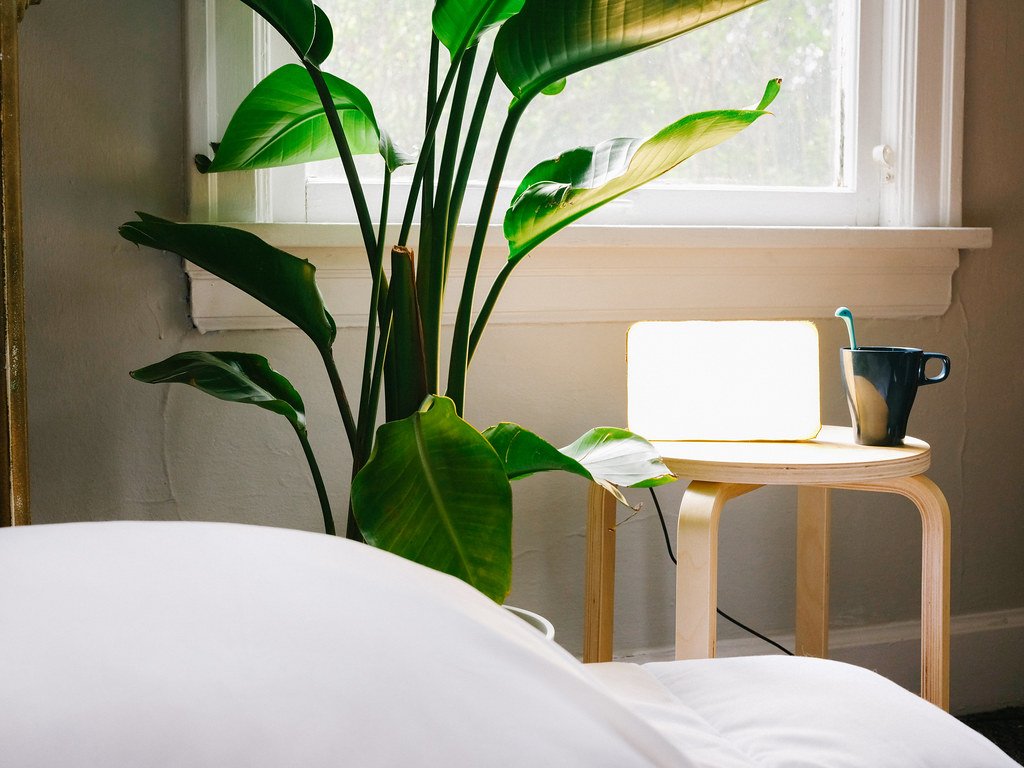Bedroom
30 Best Minimalist Bedroom Design Ideas
“Simplicity is key to modern elegance,” as Coco Chanel once stated. For good reason, a growing number of people are adopting simple and relaxed design.
Its classic appeal is what defines the minimalist design. Simple furniture, clean lines, and neutral hues are less likely to fall out of style.
This implies that you can have a lovely, fashionable bedroom without having to make adjustments or upgrades too often. Additionally, a simple bedroom fosters calm.
You may create a calm space where you can better rest and unwind by getting rid of extra things and putting utility first.
This method promotes conscious living, in which every object in the space is chosen for its aesthetic value and function, resulting in a more deliberate and sustainable manner of living.
Some claim that minimalism is uninteresting. Let’s confront that myth directly! It’s not boring to be minimalist!
It may not have the gaudy frills or striking hues of some other types, but that’s exactly what makes it so lovely. The main goal of minimalism is to embrace simplicity and allow the design’s excellence to be seen.
Clutter tends to accumulate in bedrooms like nobody’s business. It’s simple for items, such as shoes, clothes, books, and electronics, to accumulate and give the room an unorganized appearance.
It will be simpler to maintain an ordered and clutter-free space if the design and décor are kept simple.
This post offers 30 carefully chosen minimalist bedroom design ideas that will turn your room into a stylish and tranquil retreat.
These suggestions can help you design a beautiful and useful space, whether your goal is to completely remodel your existing bedroom or only add a few minimalist elements.
1. Use a Neutral Color Palette

Opting for a neutral color scheme—like soft whites, beiges, warm grays, or light taupes—helps create a calming and visually cohesive bedroom. These shades reflect light beautifully and keep the space feeling open and airy. You can layer different tones within the same family to add depth, or use subtle contrasts like white walls and a sand-colored bedspread. Neutral palettes also make it easier to switch out accent decor without disrupting the harmony of the room.
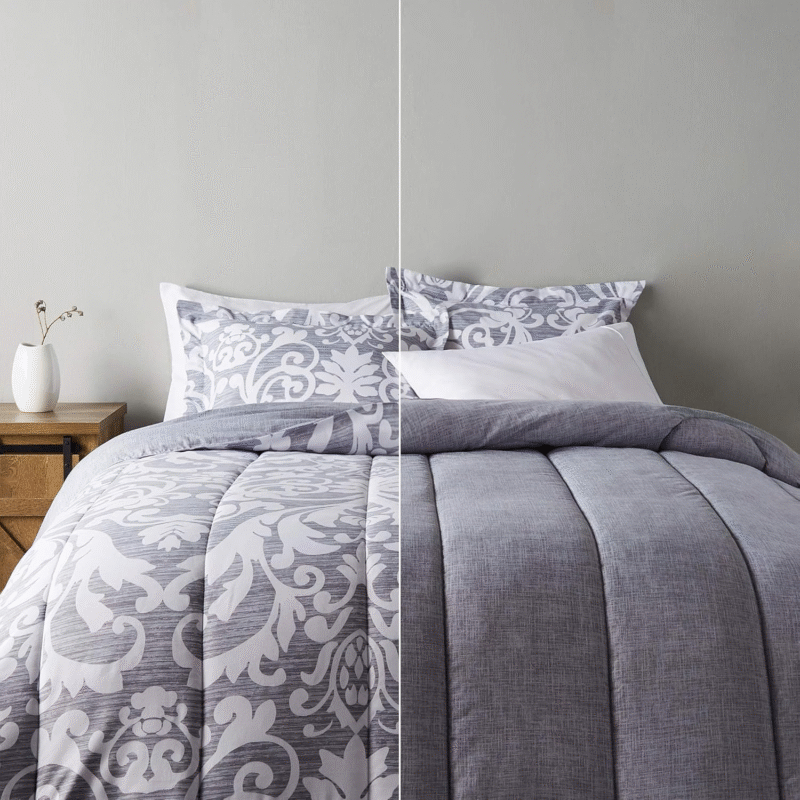
2. Incorporate Natural Materials
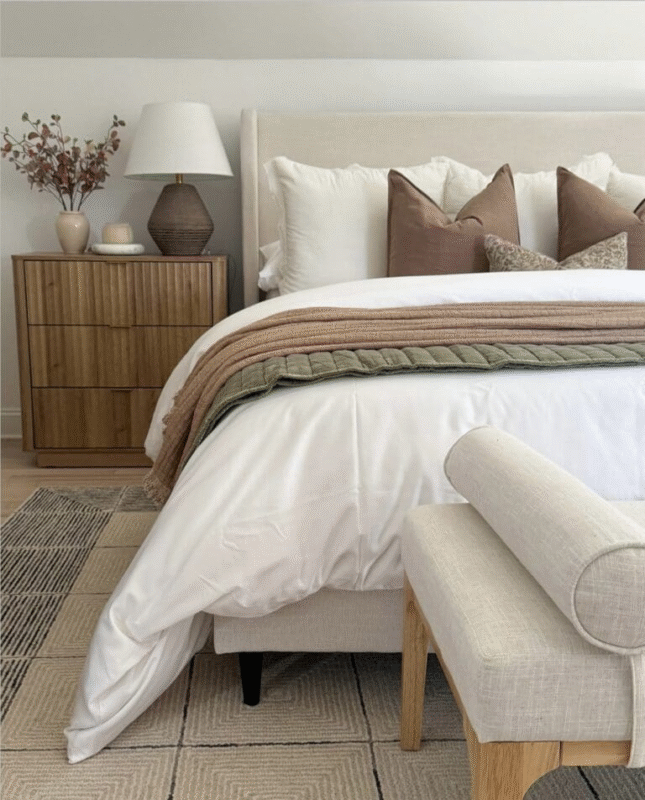
Adding natural textures like wood, rattan, jute, or stone can instantly warm up a minimalist bedroom. Consider a raw-edge wood bench at the foot of the bed, woven baskets for storage, or a stoneware vase on the nightstand. These elements introduce organic texture while keeping within a minimalist color range. They also connect your space to the outdoors, bringing in a grounded, earthy feel that enhances tranquility.
3. Add a Pop of Color
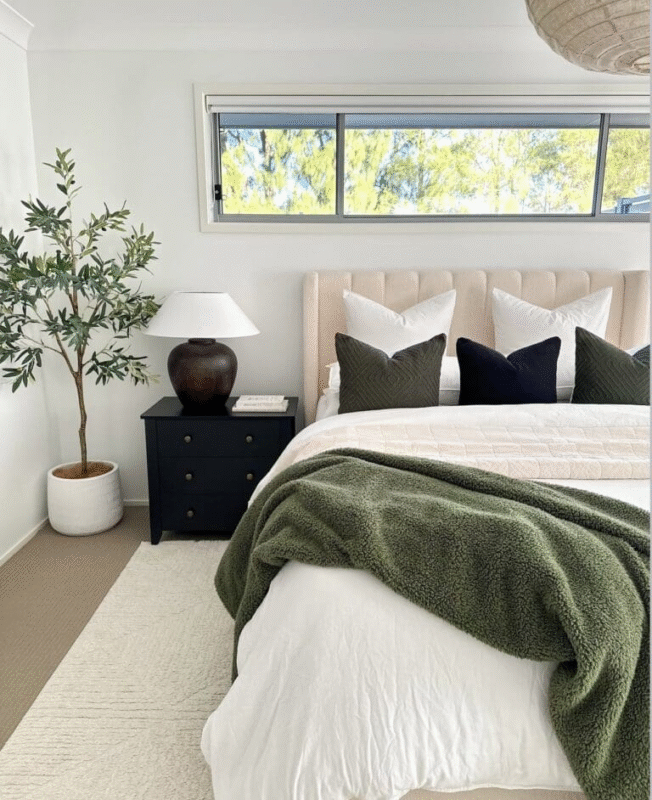
Even the most neutral space can benefit from a strategic dose of color. Think a bold throw pillow, a single colorful abstract print, or a statement chair in a rich tone like terracotta, olive green, or dusty blue. This focal point breaks up monotony and brings visual energy into the room without overwhelming the clean aesthetic. The key is to limit it to one or two elements so the space still feels cohesive and intentional.
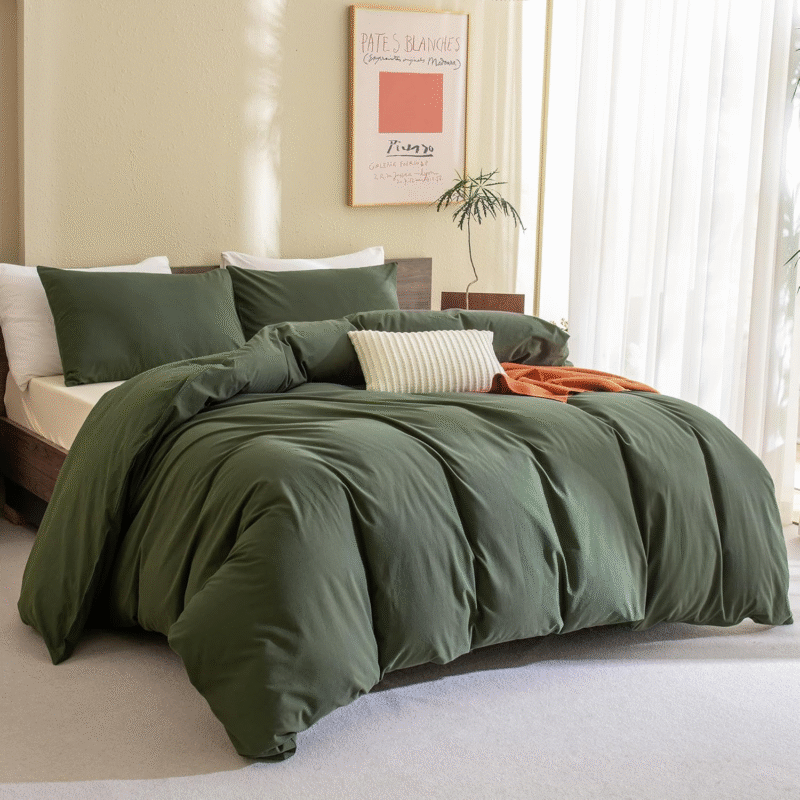
4. Stick to Simple Furniture
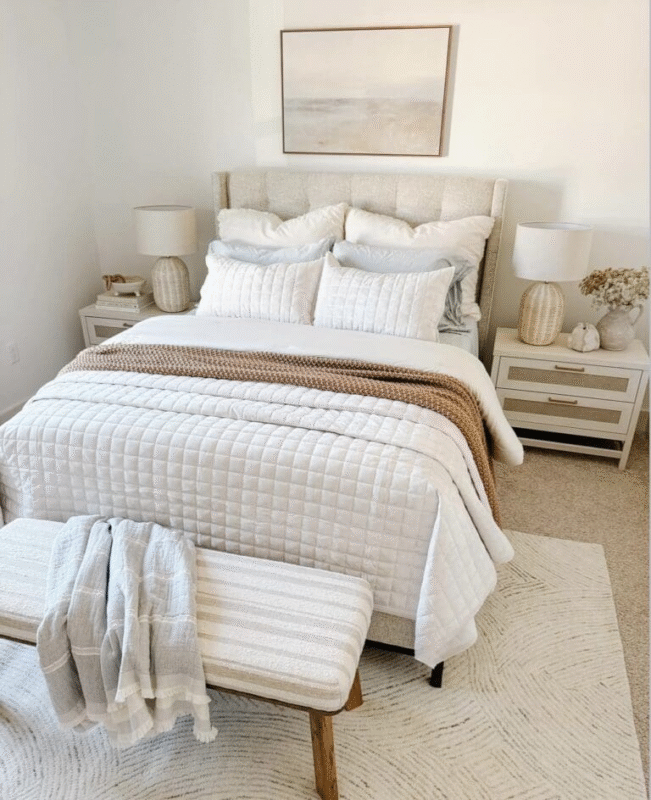
Go for streamlined furniture pieces with minimal ornamentation. A platform bed, floating nightstands, and a low dresser with flat-panel drawers are great choices. Stick to wood, matte metals, or painted finishes in neutral hues. Avoid oversized or overly decorative pieces—opt instead for items that serve a purpose while keeping the space feeling open and uncluttered.
5. Place an Area Rug
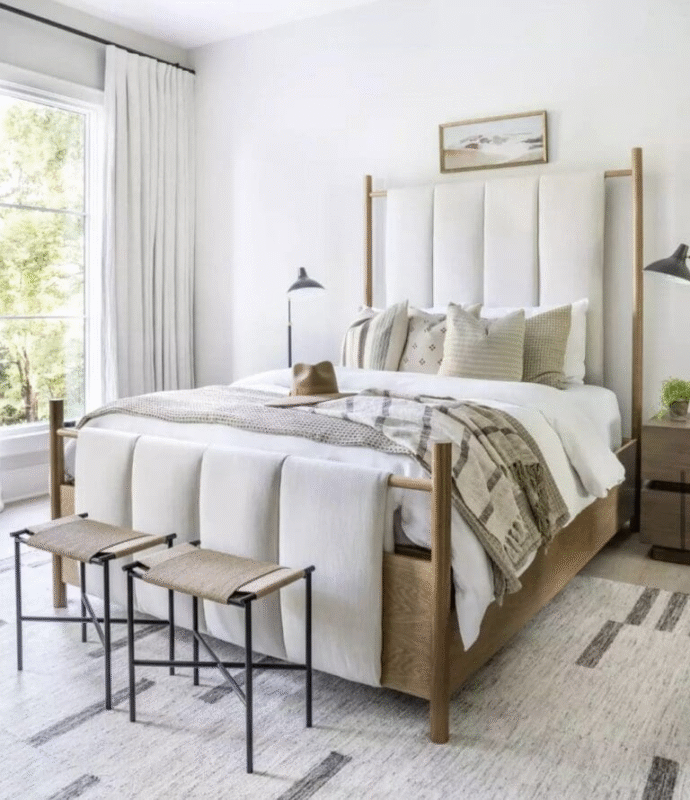
A rug adds softness, warmth, and grounding to the bedroom. Choose a design in a subtle color, texture, or weave—such as a low-pile wool rug in cream or a natural jute rug with a tight braid. Placing a rug under the bed can visually define the sleeping area and make the space feel cozier, especially in rooms with hardwood or tile floors.
6. Use Cozy and Soft Textiles
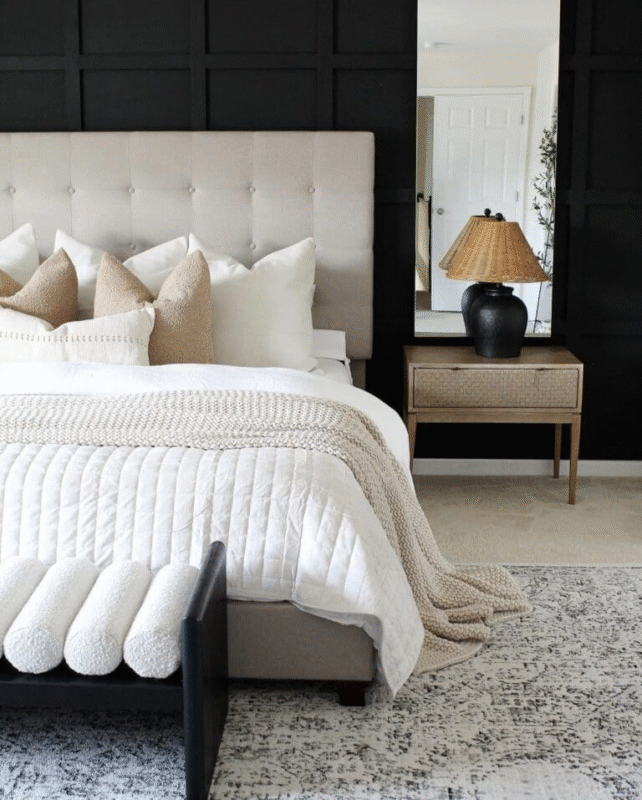
Layer in softness with high-quality textiles that invite relaxation. Linen or cotton bedding in neutral tones, lightweight gauzy curtains, and a knit or wool throw at the end of the bed can all enhance comfort without adding visual noise. Stick to natural fibers and avoid shiny or synthetic textures for a more grounded and tactile look.
7. Create an Accent Wall
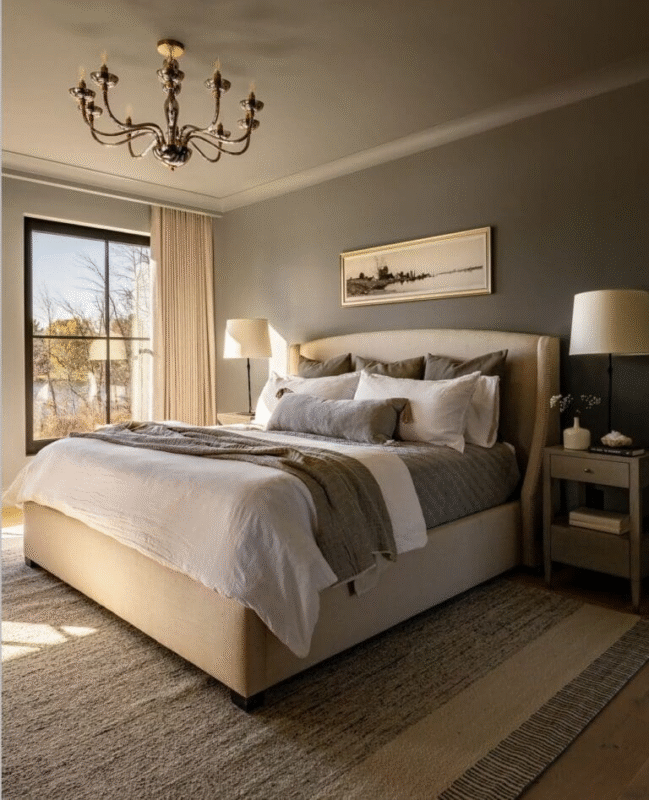
An accent wall can add just enough visual impact to keep a minimalist room from feeling flat. Consider using a soft, moody paint color, vertical wood slats, or a textured material like plaster or limewash. This can create a focal point behind the bed while maintaining the clean aesthetic of the room. Keep the rest of the space pared down to let the wall stand out.
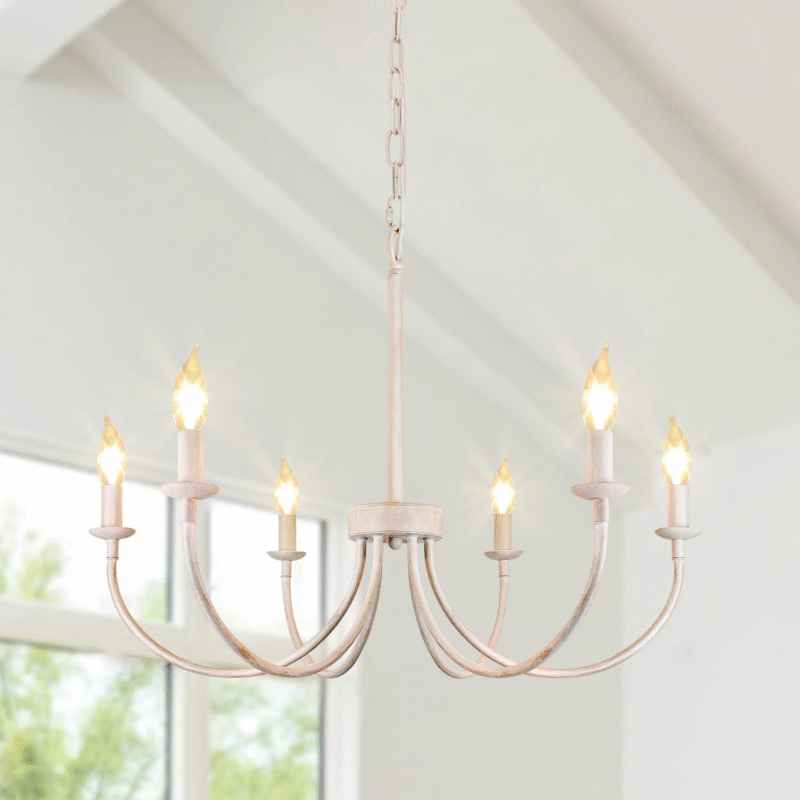
8. Invest in a Platform Bed
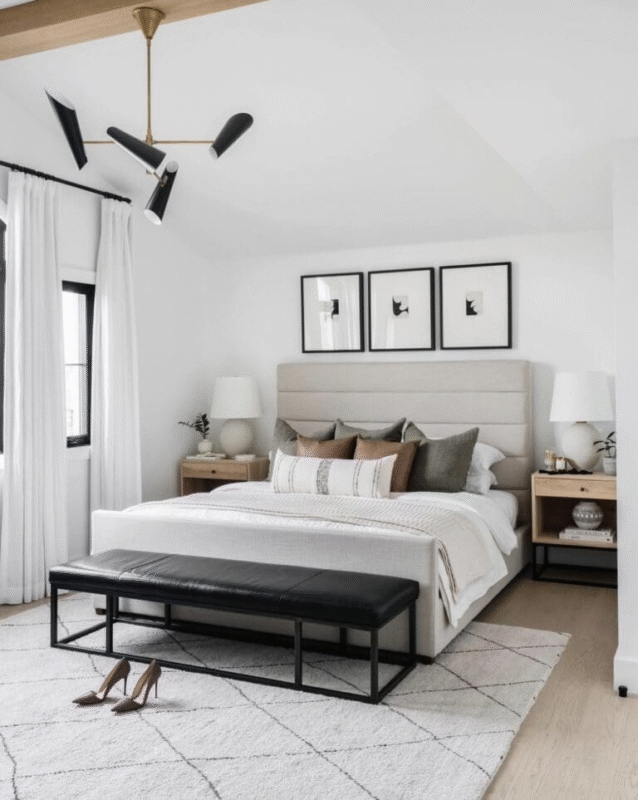
Platform beds are a minimalist staple thanks to their low profile and simple lines. Choose one with a solid wood frame, upholstered base, or metal construction in a matte finish. Some styles even come with built-in storage drawers, helping reduce clutter. A platform bed makes the room feel more spacious and modern while staying true to minimalist design.
9. Use Minimalist Bedding
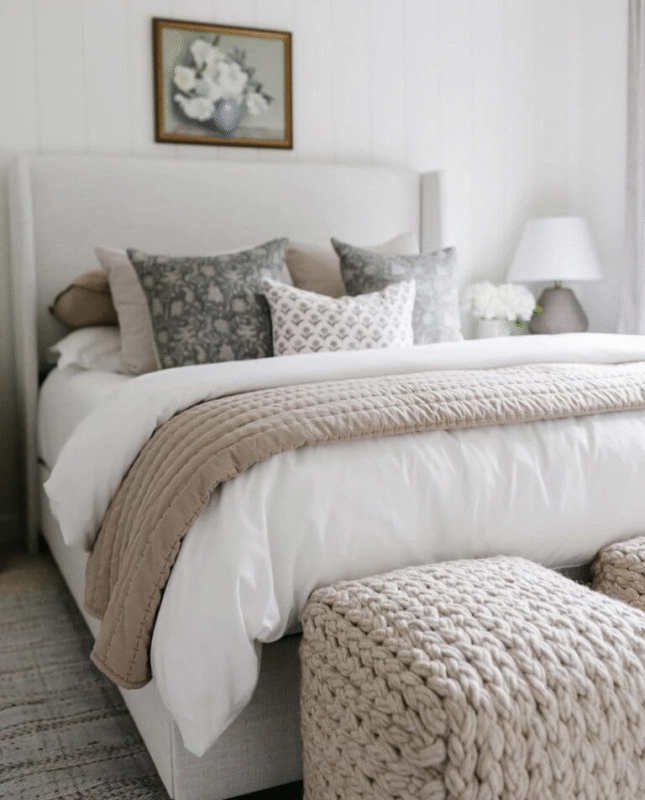
Stick to simple bedding with clean lines and soft textures. White or off-white duvet covers, neutral-toned linen sheets, and a couple of solid or subtly textured throw pillows are all you need. Avoid loud patterns or too many layers—keep it fresh, breathable, and easy to maintain. Focus on the quality of materials rather than quantity of accessories.
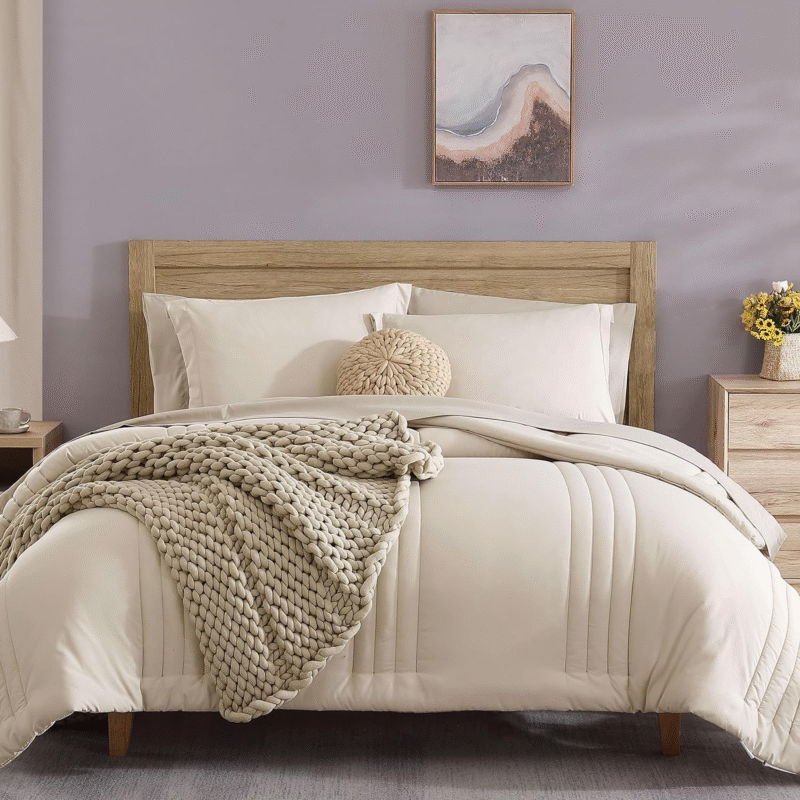
10. Consider a Textured Wall
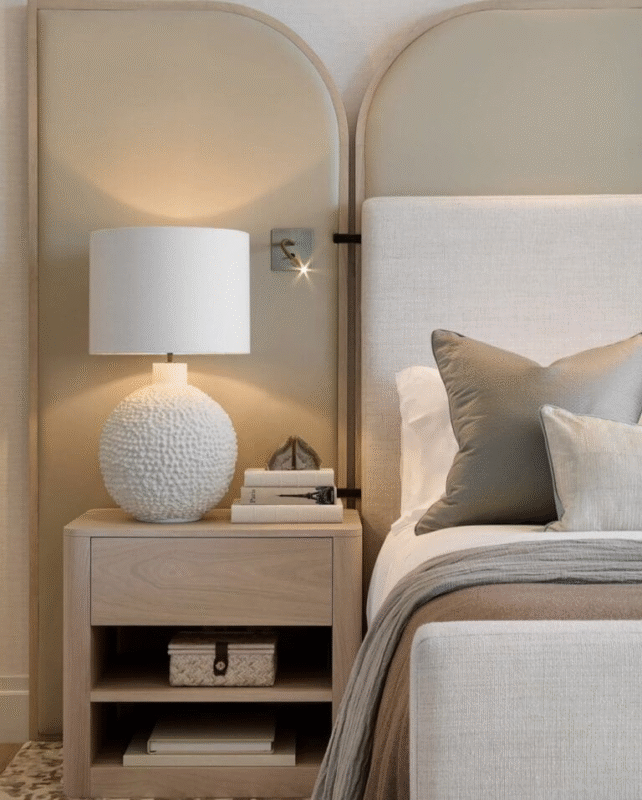
If you want to add depth without color, texture is your best friend. Reclaimed wood planks, whitewashed brick, limewashed finishes, or even textured wallpaper can bring dimension to your walls without breaking the minimalist vibe. Use this treatment sparingly—typically just one wall is enough to make a visual impact without overwhelming the space.

11. Keep the Decor Limited

Minimalist spaces thrive on restraint. Instead of crowding your bedroom with décor, choose just a few meaningful or sculptural pieces that speak to your style. A large-scale art print, a sleek table lamp, or a single ceramic vase can make more impact than a shelf full of trinkets. Focus on balance, negative space, and quality—each item should feel intentional and not just decorative filler.
12. Incorporate Some Blue
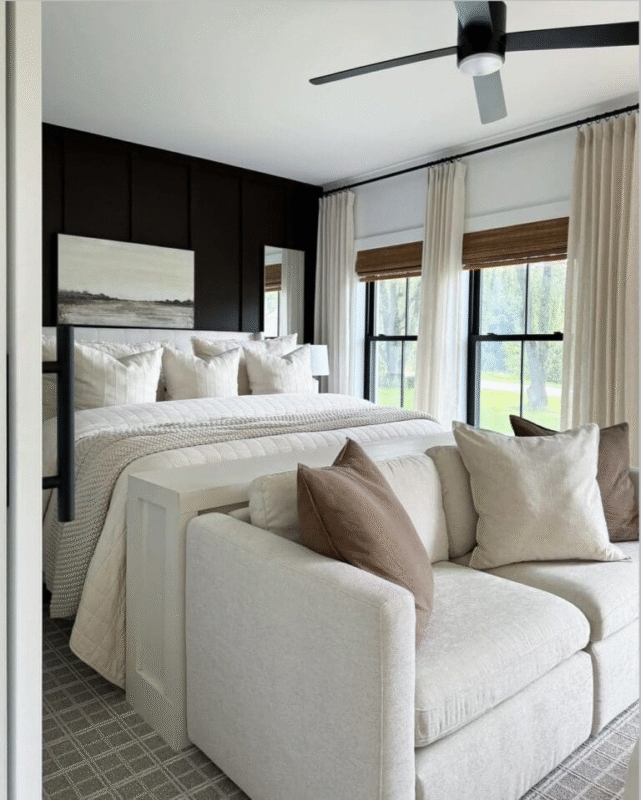
Blue tones—especially dusty, muted, or pastel shades—are perfect for minimalist bedrooms. They bring a sense of calm and relaxation that’s ideal for a restful atmosphere. Try a soft blue accent wall, pale blue sheets, or indigo-inspired artwork. Just be sure the blue stays subdued so it doesn’t overpower the neutral palette.
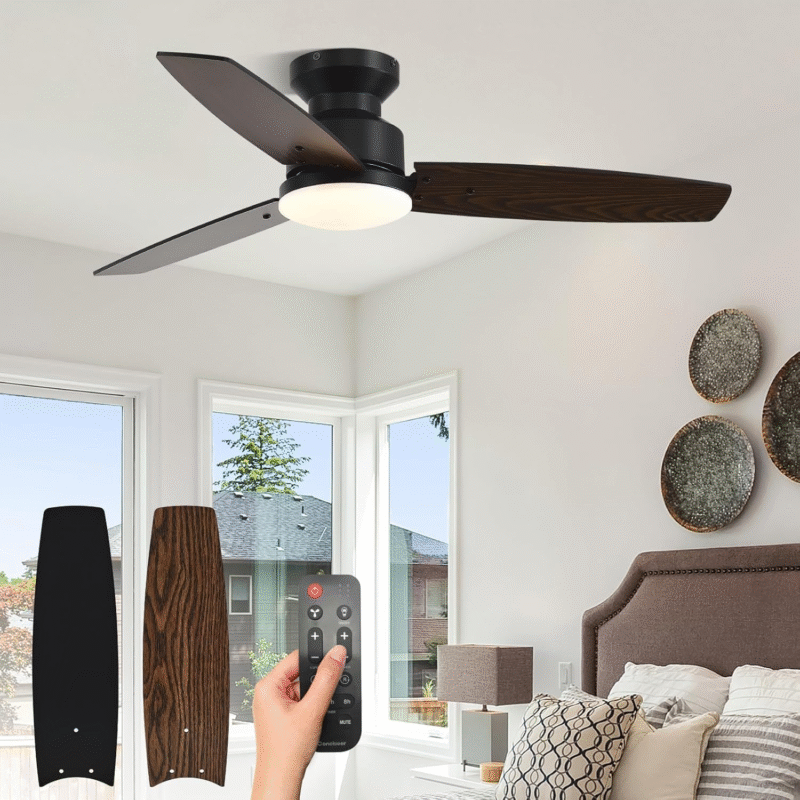
13. Add Soft Lighting
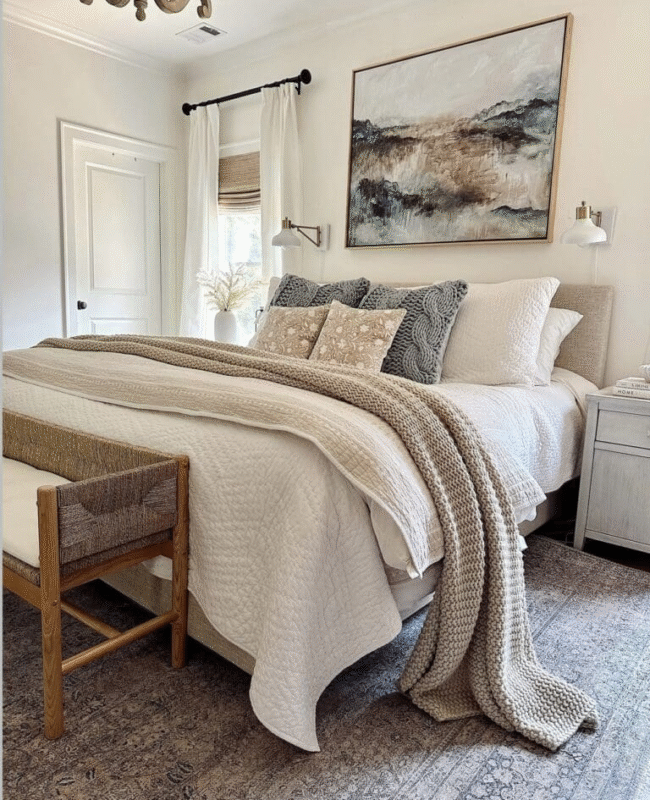
Lighting plays a crucial role in the overall mood of a minimalist room. Ditch harsh overhead bulbs in favor of diffused, ambient lighting. Use warm-toned LED bulbs in sconces, pendant lights, or small-scale table lamps to create a gentle glow. Consider layering your lighting with multiple sources—overhead fixtures for function, sconces for symmetry, and bedside lamps for coziness.
14. Functional Storage Solutions
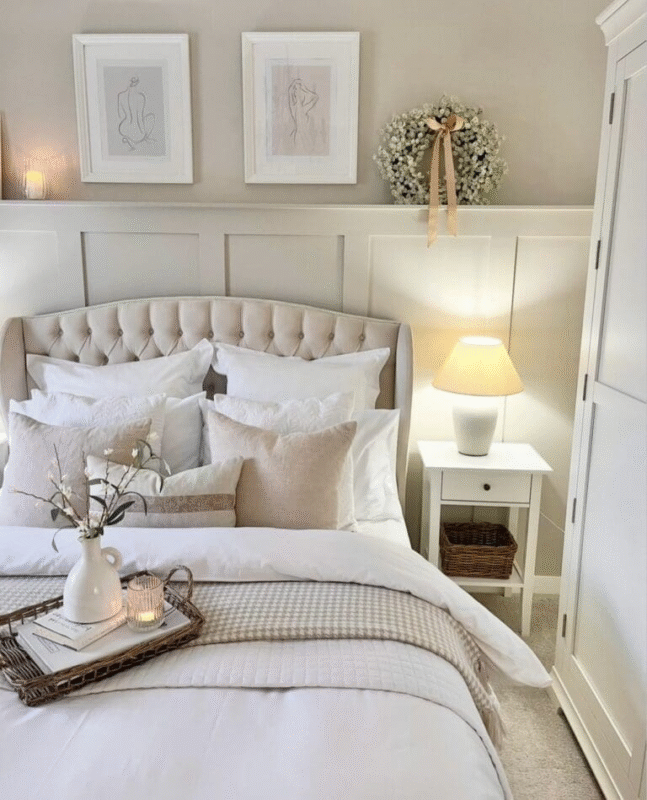
Clutter disrupts minimalism, so hidden or multifunctional storage is key. Think under-bed drawers, sleek wall-mounted shelves, or built-in wardrobes with flat-front doors. Choose storage that blends into the room rather than standing out. Ottomans with hidden compartments, nightstands with clean drawers, and floating shelves offer storage without bulk.
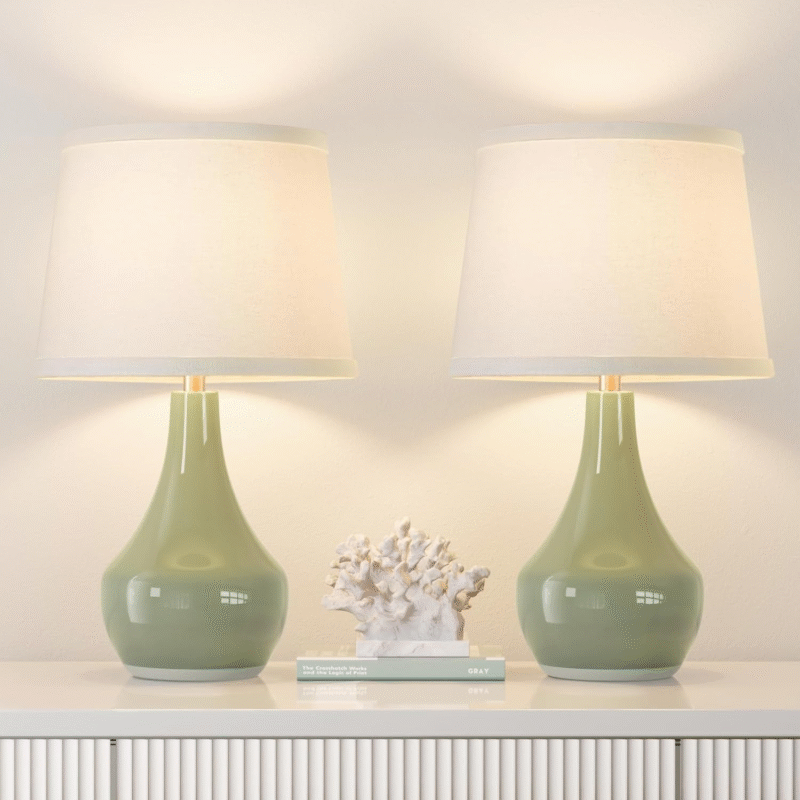
15. Embrace Symmetry
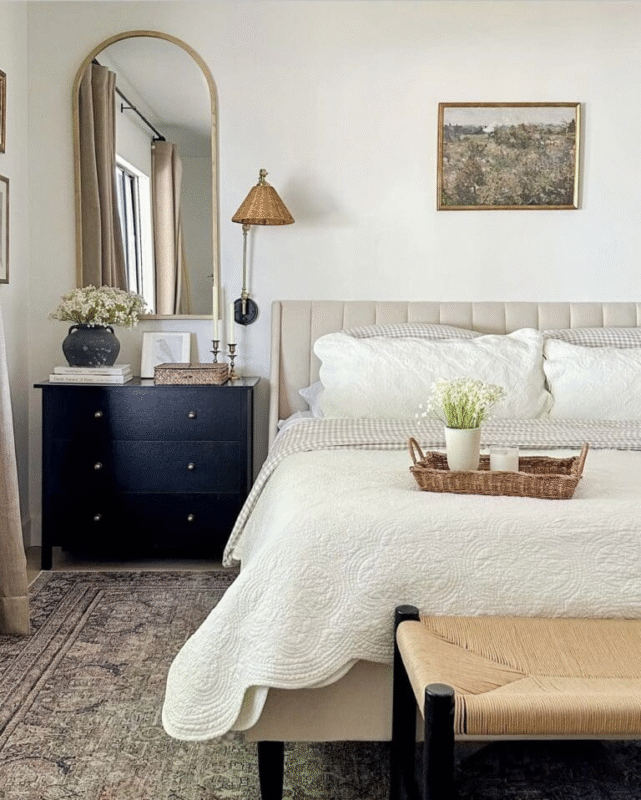
Symmetry creates a sense of visual order, which naturally calms the mind. Try matching nightstands and lamps on either side of the bed, aligning furniture along a central axis, or using pairs of pillows, art, or sconces to frame the bed. This doesn’t mean the room needs to be perfectly mirrored—but thoughtful repetition can add harmony.

16. Add Wall Sconces
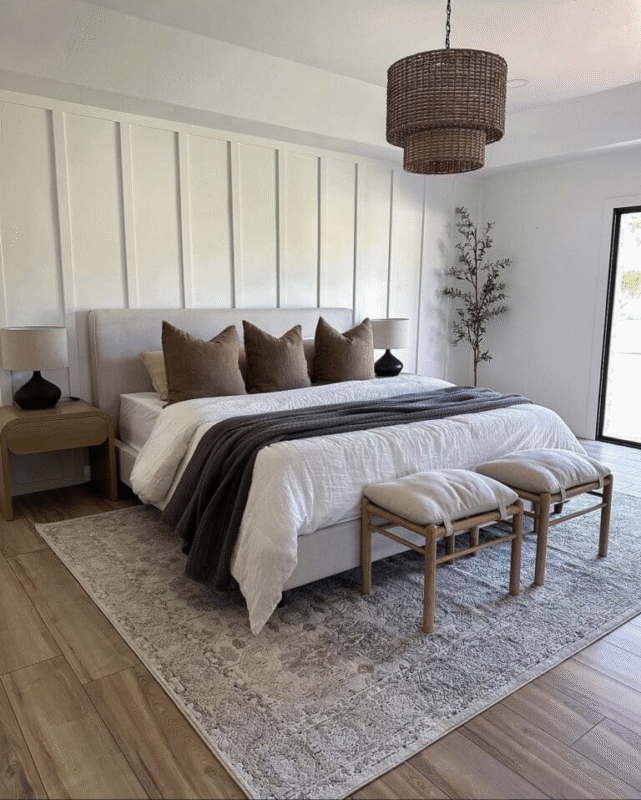
Wall sconces are both stylish and practical. They free up space on your nightstand while offering cozy lighting for reading or winding down. Opt for minimalist designs in black, brass, or white finishes, with clean lines and simple shades. Adjustable swing-arm sconces are especially useful and can add a modern architectural touch to the room.
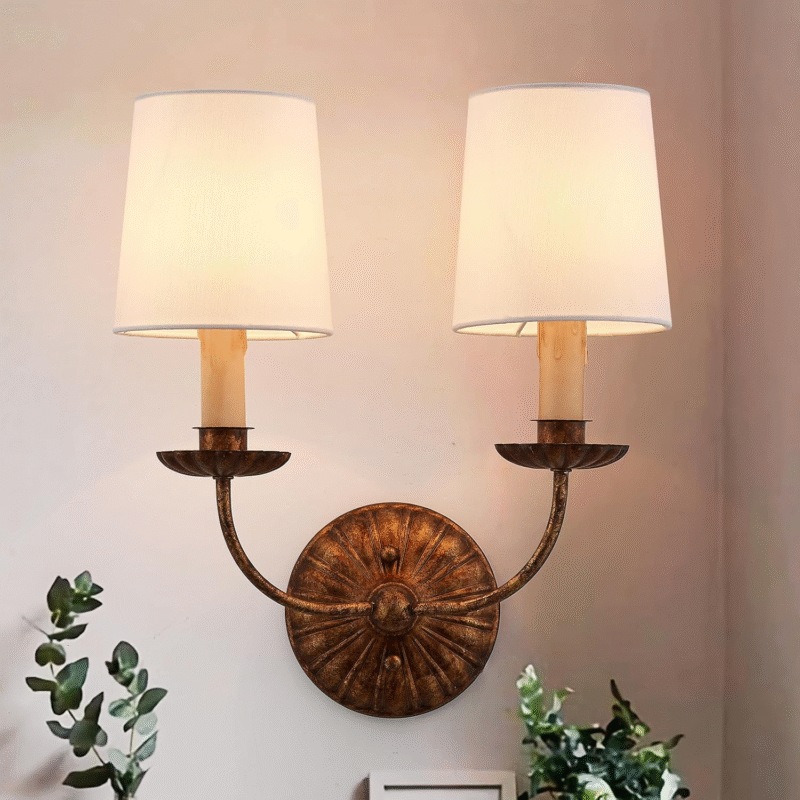
17. Scandinavian Influence
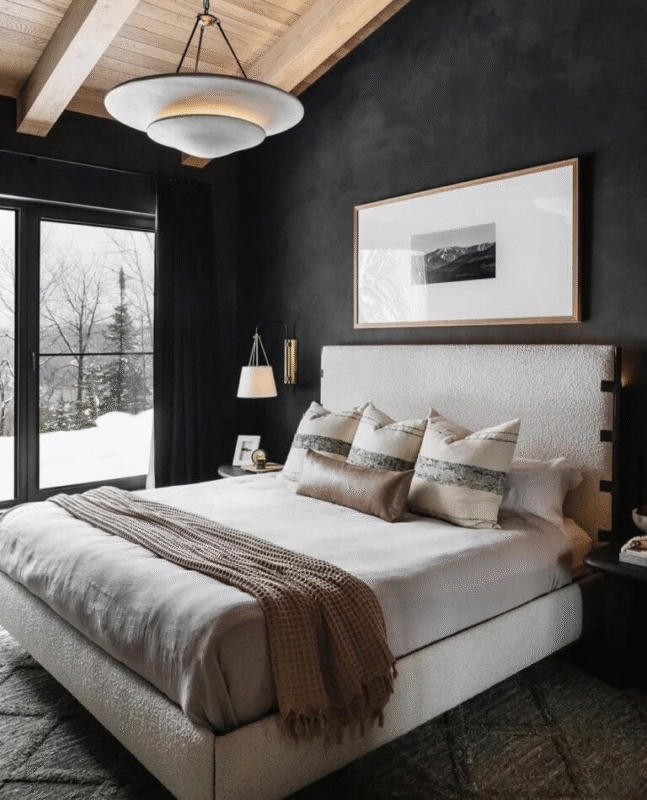
Scandinavian design and minimalism go hand in hand. It’s all about soft textures, functional layouts, and an inviting color palette. Incorporate blond woods, pale textiles, simple furniture silhouettes, and an overall emphasis on comfort (or hygge). A chunky wool blanket, a whitewashed floor, and a light oak bed frame perfectly reflect this aesthetic.
18. Add a Nautical Touch
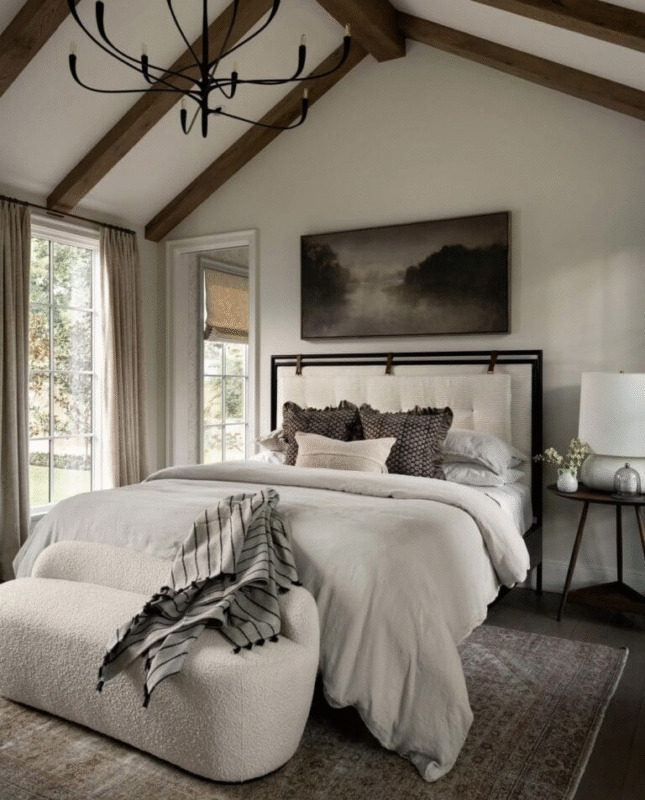
You can introduce subtle nautical elements to a minimalist bedroom without going full beach cottage. Think navy-and-white striped bedding, rope textures, driftwood-style accents, or simple framed prints of ocean scenes. Keep it understated—just one or two nods to the coast can evoke that tranquil, seaside vibe without veering into theme territory.
19. Use Simple Window Treatments

Avoid heavy drapes or patterned curtains in a minimalist space. Instead, go for sheer, linen, or cotton panels in white or neutral tones that allow light to filter softly into the room. Roman shades or roller blinds in muted colors also work well, offering privacy without visual clutter. Let natural light be part of your decor.
20. Install Pendant Lighting
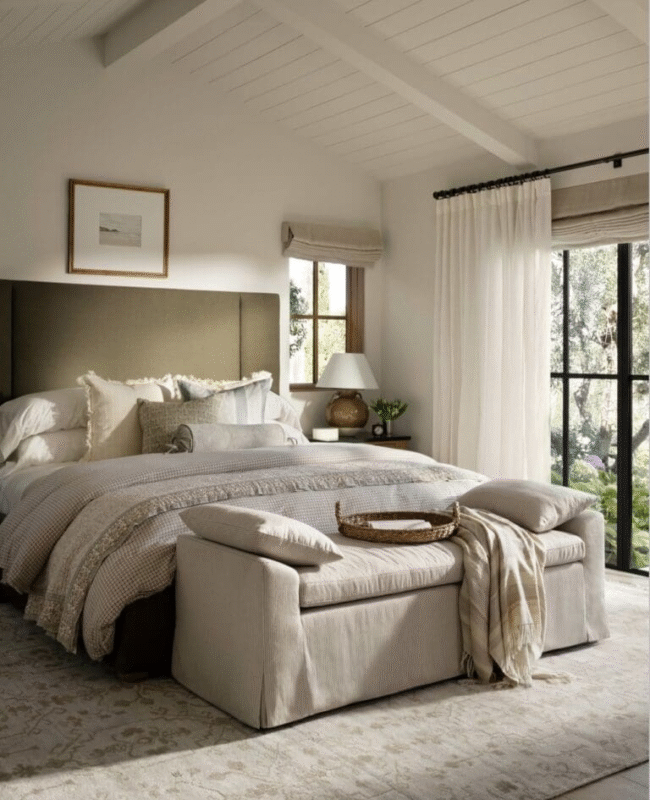
Pendant lights can act as modern jewelry for your minimalist bedroom. Hang a single pendant on each side of the bed instead of lamps, or place one above a reading nook or bench. Choose sleek materials like matte metal, smoked glass, or woven rattan to add sculptural interest. Pendants also help keep surfaces clear, reinforcing that minimalist feel.
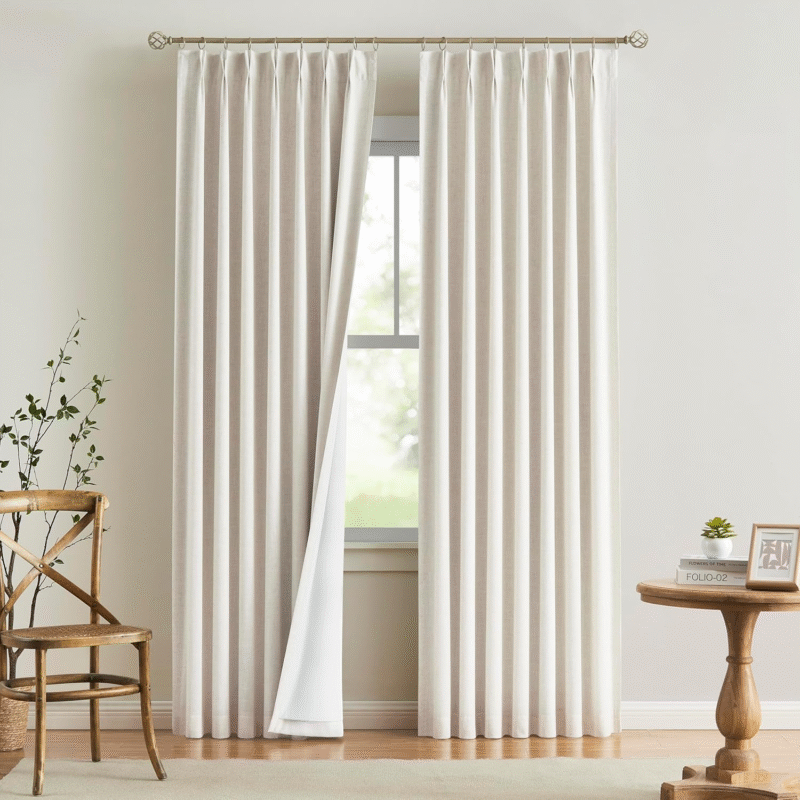
21. Mix Patterns and Textures
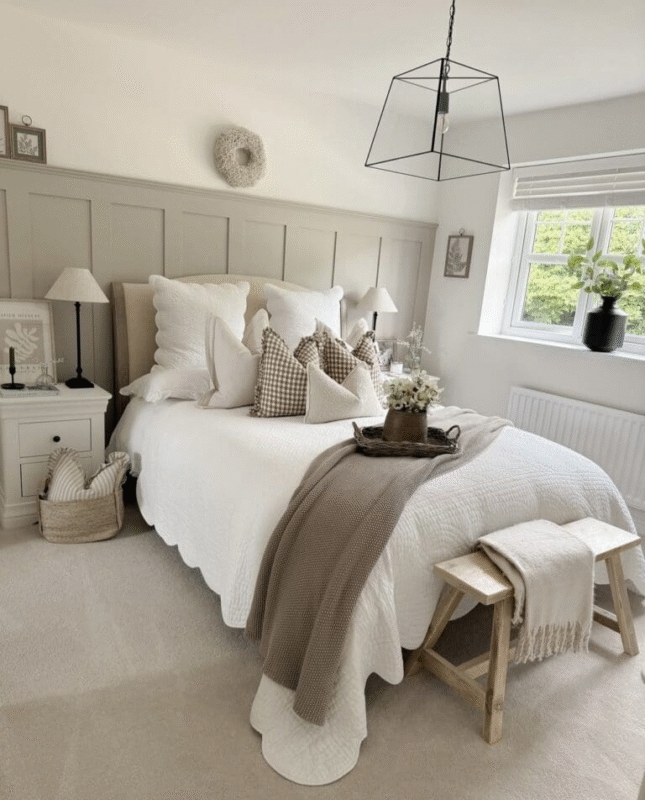
While minimalism often avoids bold patterns, you can still layer texture and subtle design to keep the space engaging. Try mixing a chunky knit throw with smooth linen sheets, or layering a soft wool rug over a flatweave jute one. Even tone-on-tone patterns—like a white duvet with a stitched geometric detail—can add richness without disrupting the calm.
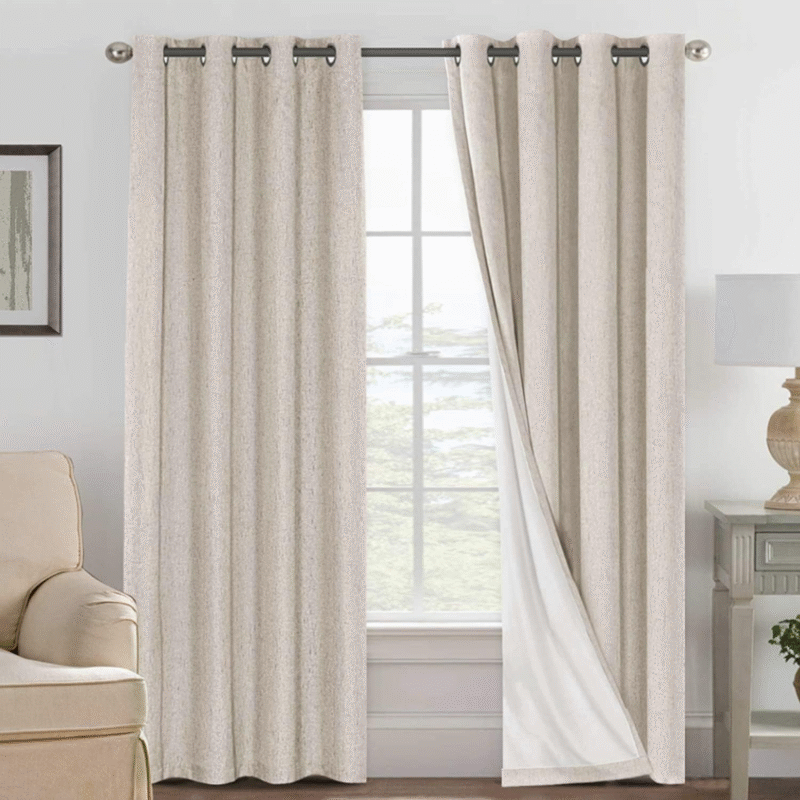
22. Subdued Color Accents
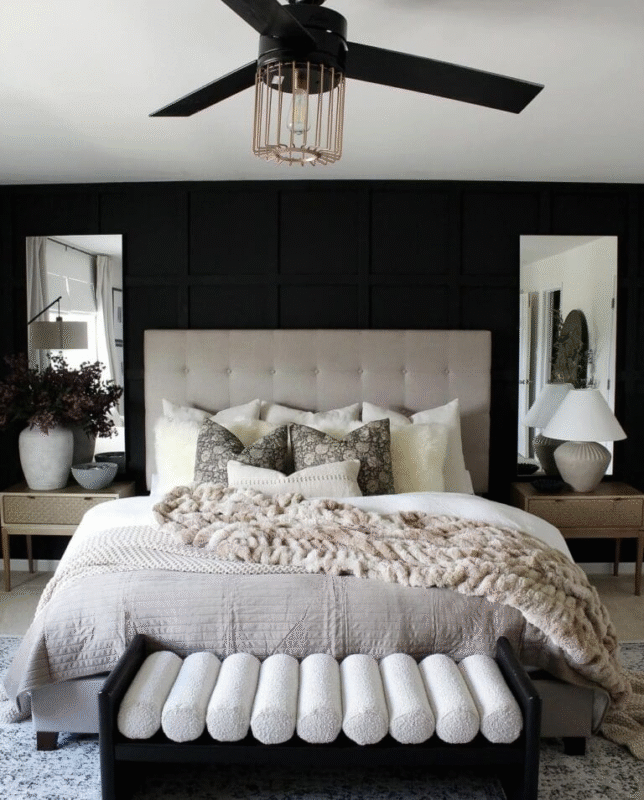
If you want to experiment with color, start small and subtle. Think blush pink, sage green, rust, or slate blue in very soft, washed-out tones. Add them through throw pillows, vases, or even a single piece of artwork. These colors won’t compete with the room’s simplicity, but they’ll add personality and softness.
23. Green Accent Wall
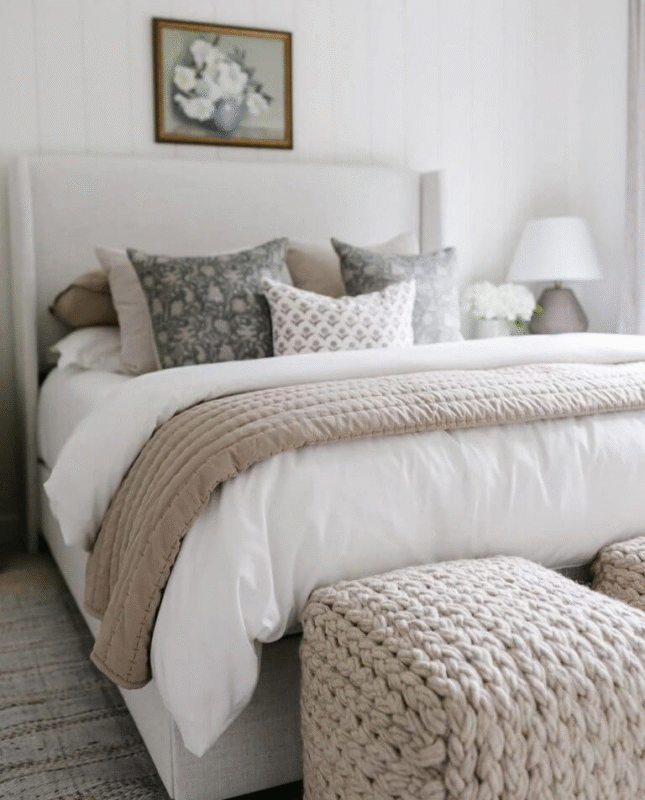
A green feature wall in a muted olive, sage, or eucalyptus tone can bring life to a neutral bedroom. This earthy hue pairs beautifully with beige, taupe, and white, giving your space a natural and restful feeling. Paint the wall behind your bed to anchor the space visually, or choose one with architectural interest like molding or paneling.
24. Embrace the Bohemian Style
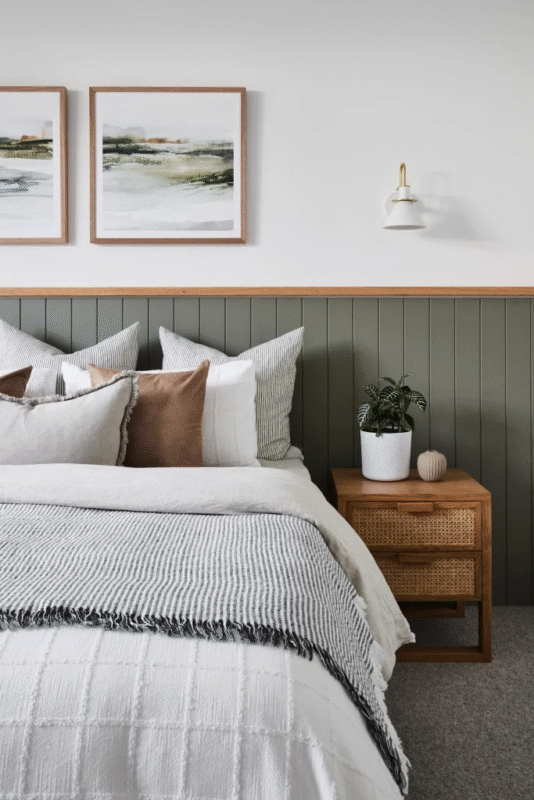
Bohemian doesn’t have to mean maximalist. You can bring in boho-inspired touches with restraint—think neutral Moroccan rugs, handcrafted ceramic planters, or macramé wall hangings in cream or tan. Combine minimalist structure with boho texture to create a calming yet soulful space that feels curated, not cluttered.
25. Think Bright and Airy
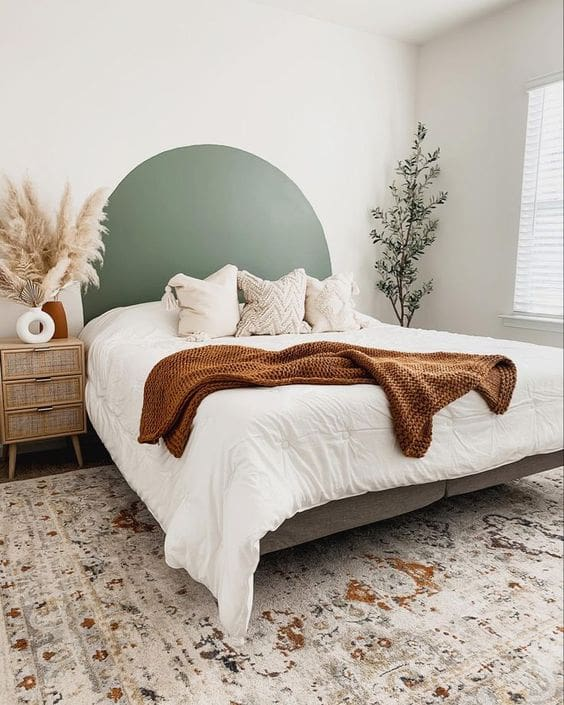
A key principle of minimalist bedrooms is maximizing natural light. Use light-colored walls and reflective surfaces like glass or mirrors to enhance brightness. Keep windows unobstructed or dressed with sheer curtains. Arrange furniture so it doesn’t block light, and consider a light-colored floor rug to help bounce illumination throughout the room.
26. Add Indoor Plants
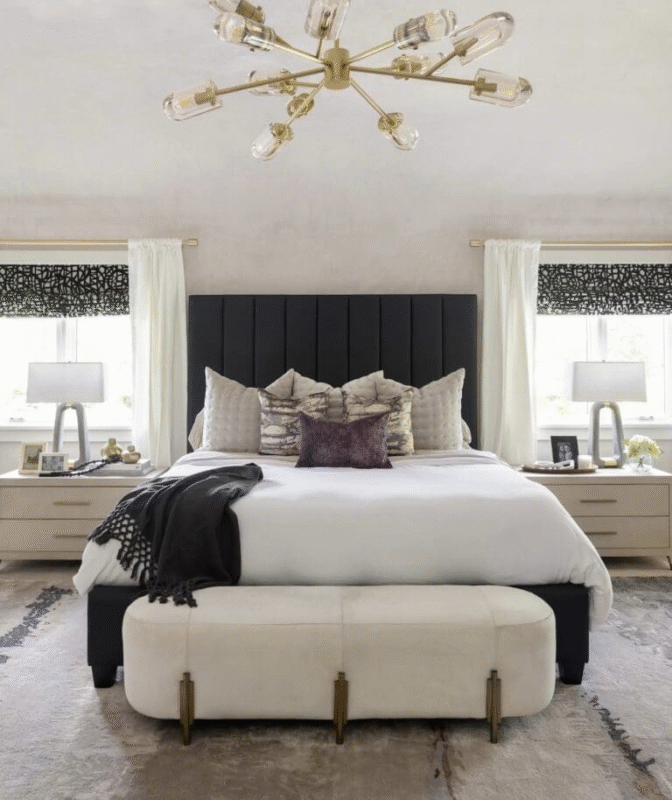
Greenery brings vitality and softness to minimalist interiors. Choose low-maintenance indoor plants like snake plants, ZZ plants, or pothos. Their sculptural leaves can complement the clean lines of your furniture while adding a splash of natural color. Use simple planters in ceramic, terra cotta, or matte finishes to keep the look cohesive.
27. Add a Traditional Twist
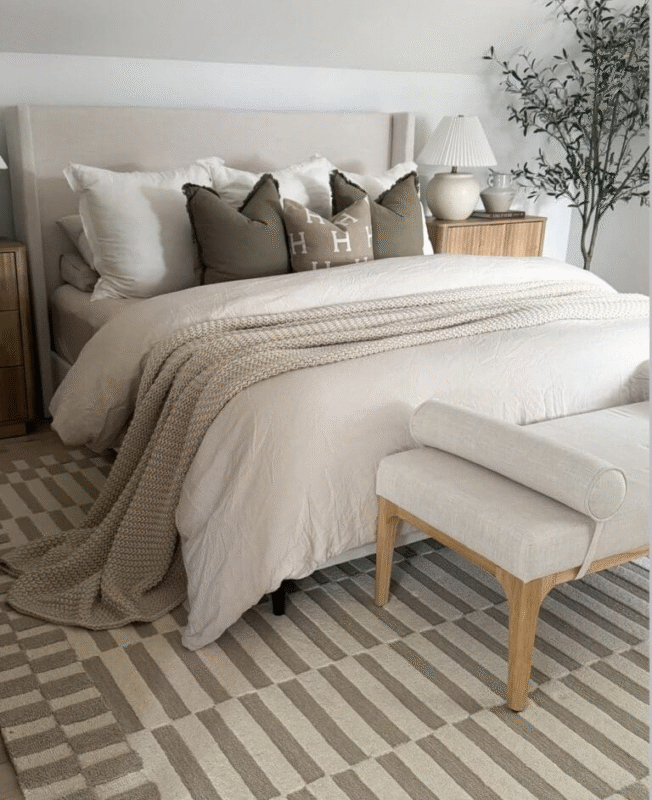
Introducing one or two traditional elements can ground a modern minimalist room. Try incorporating an antique chest, a vintage lamp, or classic crown molding. These touches add timelessness and a sense of history without disrupting the overall clean look—just make sure they’re balanced with simpler modern forms.
28. Hang a Monochrome Artwork
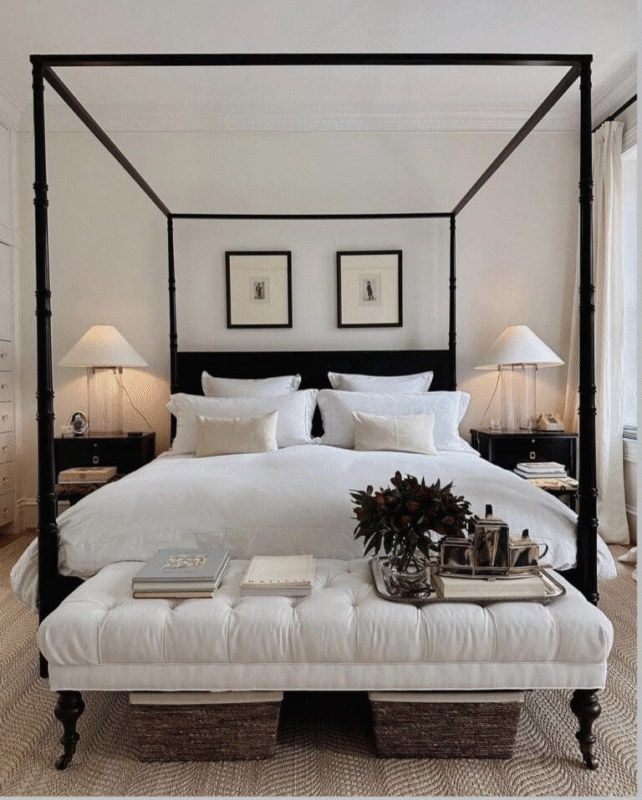
Black-and-white or grayscale artwork complements a minimalist room without adding busy color. Look for abstract prints, geometric compositions, or monochrome photography. One large piece above the bed or a trio of smaller works on an accent wall can add sophistication and visual focus without overwhelming the space.
29. Consider Wall Paneling
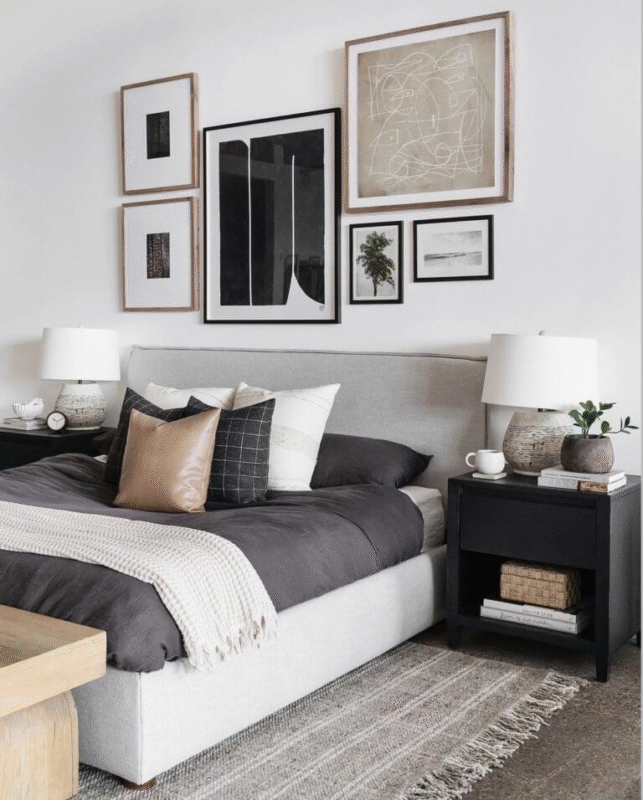
Wall paneling can bring subtle texture and architectural depth to your bedroom. Whether it’s vertical shiplap, square grid molding, or flat panels, the key is to keep it minimal in design and color. Painted in the same tone as the walls, paneling adds shadow and texture while keeping things understated and elegant.
30. Place a Bed Bench
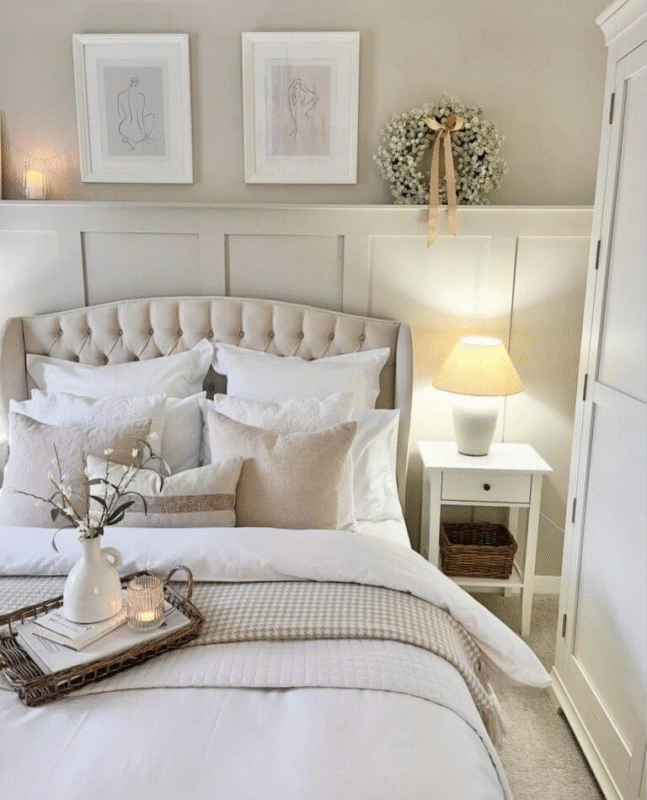
A bench at the foot of the bed serves both form and function. It offers a place to sit, lay out clothes, or hold extra pillows at night. Choose one with clean lines and an upholstered top in neutral fabric—or go for a wooden slat bench for a more Scandi-inspired feel. It helps finish the look of your bed without adding clutter.

